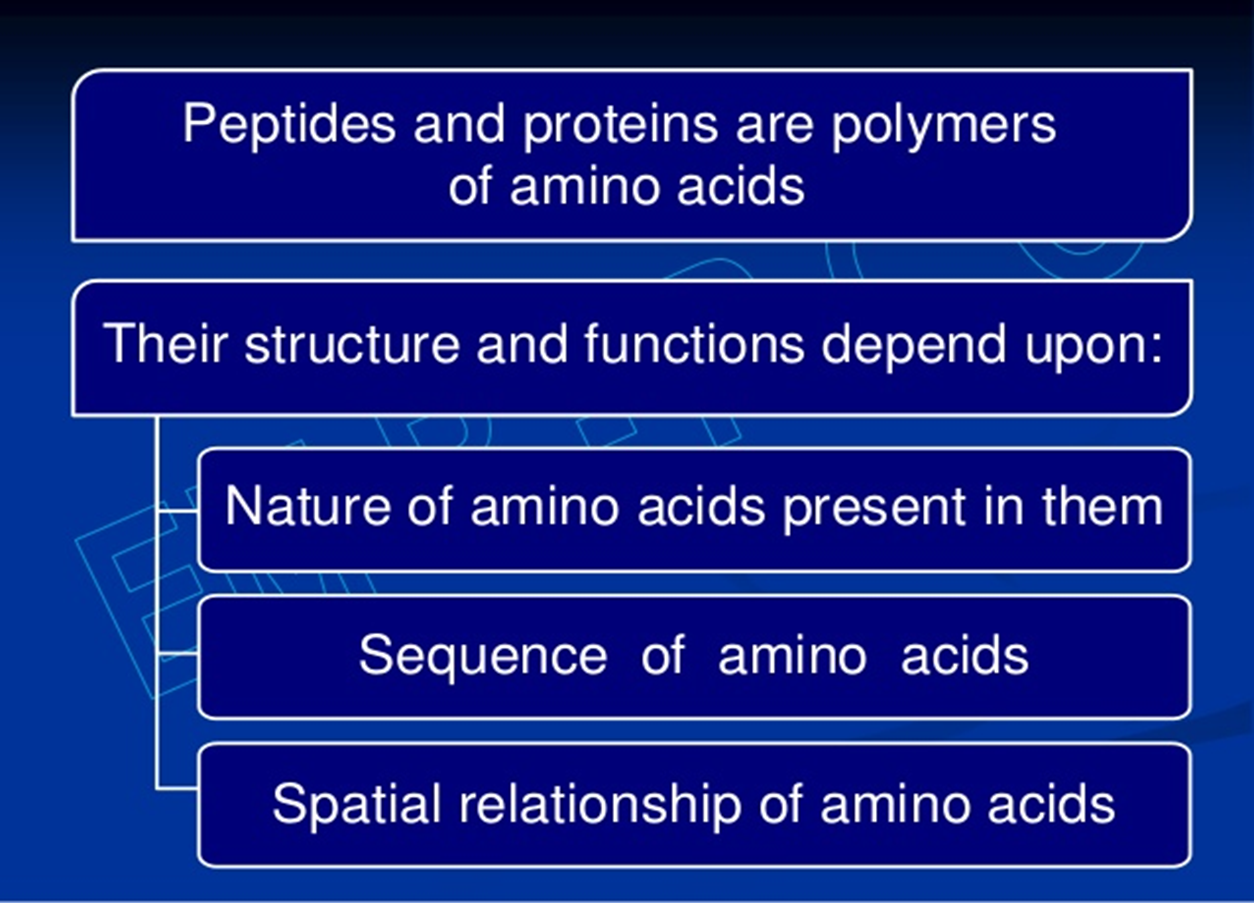Peptides
PEPTIDES
FUNCTIONS
Peptides from the Greek word means digested are short polymers of amino acid monomers linked by peptide bonds, the covalent chemical bonds formed between two molecules when the carboxyl group of one molecule reacts with the amino group of the other molecule.
Peptides are distinguished from proteins on the basis of size, typically containing fewer than 50 monomer units.
The shortest peptides are dipeptides consisting of two amino acids joined by a single peptide bond. There are also tripeptides, tetrapeptides etc.
Amino acids which have been incorporated into a peptide are termed "residues"; every peptide has a N-terminus and C-terminus residues on the ends of the peptide.
A polypeptide is a long, continuous, and unbranched peptide.
Proteins consist of one or more polypeptides arranged in a biologically functional way and are often bound to cofactors, or other proteins.
Long peptides such as amyloid beta can be considered proteins, whereas small proteins such as insulin can be considered peptides.
Peptides are denoted by the number of amino acid residues as di-, tri-, tetrapeptides and the term "oligopeptides" is used for those with 10 or less amino acid residues.
Higher molecular weight peptides are called polypeptides.
AMINO ACIDS AND PROTEIN SYNTHESIS
Proteins are produced through the processes of DNA transcription and translation. In protein synthesis, DNA is first transcribed or copied into RNA. The resulting RNA transcript or messenger RNA is then translated to produce amino acids from the transcribed genetic code. Organelles called ribosomes and another RNA molecule called transfer RNA help to translate mRNA.
The resulting amino acids are joined together through dehydration synthesis, a process in which a peptide bond is formed between the amino acids. A polypeptide chain is formed when a number of amino acids are linked together by peptide bonds. After several modifications, the polypeptide chain becomes a fully functioning protein. One or more polypeptide chains twisted into a 3-D structure form a protein.
BIOLOGICAL POLYMER
While amino acids and proteins play an essential role in the survival of living organisms, there are other biological polymers that are also necessary for normal biological functioning.







Comments
Post a Comment